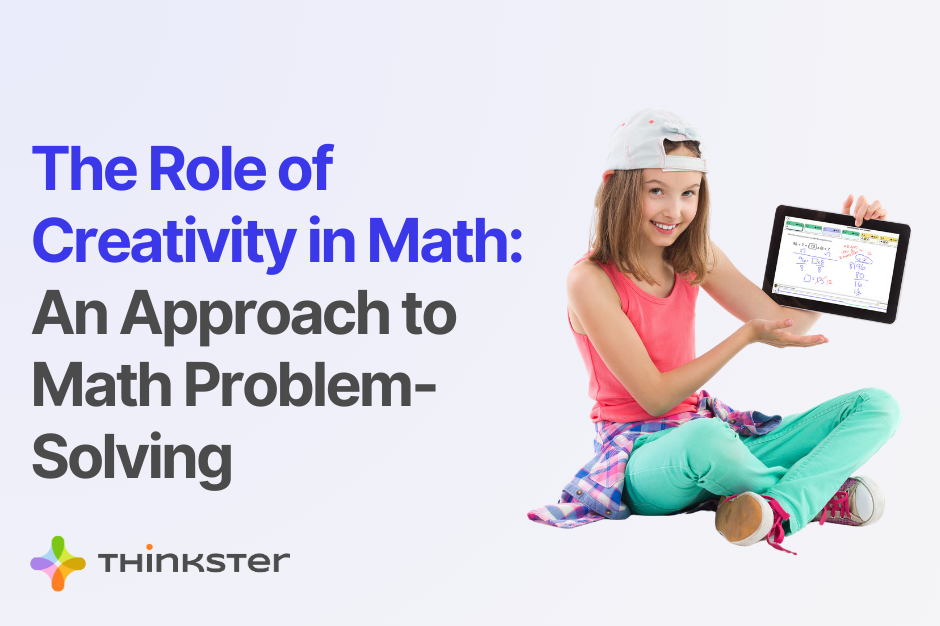

Last Updated on June 30, 2023 by user
The mind is a powerful thing. It’s like a multidimensional wonder palace where thoughts and ideas create our own sense of reality. It can be a positive thing, or a negative. Positive thinking in kids can be the doorway to success and happiness.
Neuroscientists have studied the human brain for decades, and they’ve discovered that recurring thoughts form neural pathways that fuse together through repetition. This means the more a particular idea or belief is activated and reinforced, the stronger these neural pathways become.
And that’s how we determine our beliefs and establish routines or patterns.
Pretty wild, huh?
But here’s the really cool thing: our brains aren’t rigid—they’re flexible and malleable. It’s called neuroplasticity, which gives us the ability to form new neuro pathways and rewire the synapses in our brains.
In other words, we can alter our entire realities by using the power of thought.
This isn’t anything new, of course.
Philosophies around the idea of positive thinking are everywhere. You see it in vision boards, motivational posters, and personal mantras (“Keep calm and carry on.”). It’s not all just a bunch of touchy-feely gobbledegook, either.
Science confirms it.
Extensive studies show that positive emotions enable us to create better, more rewarding lives through conscious intention.
Here are a few ways positive thinking can improve your work, your life, and your relationships:
But what does all that really mean?
Do we really have the power to manifest success simply by thinking happy thoughts all day long?
The answer is complicated.
Because while thinking positively is one part of the equation, definitive action is the other.
To use a tired metaphor, you can walk through your garden telling yourself there are no weeds, but for the flowers to bloom and thrive, you need to stop ignoring the weeds and tear them out by the root.
As a parent, though, it’s a whole new ballgame.
While science says it’s perfectly natural for people to become hyper-focused on negative thoughts, it can be excruciating to watch your kids express self-doubt, sadness, frustration, or anger.
And that’s why it’s essential to teach children how to accept negative emotions, process them in a healthy way, and move forward.
Because how your child deals with disappointment and frustration now will not only affect their day-to-day behavior, but it will shape their entire worldview and impact how they approach the inevitable ups and downs of life.
It starts young, too.
Researchers say that children as young as five can grasp the principles of positive thinking in kids—and they get better and better at understanding this concept as they get older.
The real kicker? These same researchers believe your influence—your own perception of hope and optimism—is the strongest predictor of your children’s knowledge about the benefits of positive thinking.
In other words, you’re their primary—and often only—example of how the ability to effectively deal with thoughts and emotions can impact their quality of life.
Don’t worry, though.
We can help you wrap your head around this idea and give you the tools you need to help your children harness the power of positive thinking. Read on to learn more about the what and how of positive thinking in kids.

Positive thinking is such a broad concept, it can be difficult to define. Still, it’s important to fully understand that the difference between optimism and denial is razor-thin.
We’ve got a lot to consider here, so let’s start with what positive thinking is vs. what positive thinking is not.
Positive thinking is all about focusing on the good and always expecting the best possible result or outcome in any given situation.
It’s about embracing hope and happiness in even the darkest of times—looking past restrictive circumstances and finding solutions where they don’t seem to exist.
When we talk about positive thinking, we’re not talking about sticking our heads in the sand while our problems fester. That’s denial, a pathological distortion of reality that messes with our minds—and the impact of this refusal to acknowledge what’s right in front of us is significant.
When avoidance enables us to continue engaging in unhealthy behavior or facilitates the continuation of a harmful situation, it’s pretty safe to say that it is dangerous. Like when a parent can’t bear to acknowledge that their adolescent child might have a substance abuse problem.
Or, to a lesser extreme, when an energetic toddler desperately tries to convince her parents that bedtime is actually playtime.
No, when we talk about positive thinking, we’re talking about approaching life’s problems and challenges in a productive way.
Now, this is not some magical elixir that will heal old wounds and make you happier and more successful overnight. It isn’t instantaneous, and it doesn’t mean you wear rose-colored glasses and tell yourself that you’re happy all day long. To achieve more, you’ll need more than a positive mindset.
You’ll need to act.
The world without positive thinkers can be a pretty dark place.
According to research conducted by the National Science Foundation, around 80% of our thoughts are negative. Considering the fact that we have approximately 50,000 – 70,000 thoughts daily, that’s an overwhelming sense of negativity.
There’s a reason for this. It’s what psychologists refer to as the negative bias (also called the negativity bias), and it shapes our worldview in more ways than we even realize:
So, where does all this deep-seated cynicism come from? Research suggests that it all starts when we’re babies. Very young infants tend to pay greater attention to positive facial expressions and tone of voice, but this begins to shift as they near one year of age.
Brain studies indicate that babies begin to experience more significant brain responses to negative stimuli around this time. This suggests that the brain’s negative bias starts to seep in during the latter half of a child’s first year of life.
And suppose we don’t start teaching kids how to harness all this pessimism and turn it into effective action. In that case, it can have a powerful effect on their behavior, decisions, and even their relationships.
Relationships are hard. Really hard, actually. And our negativity bias just makes them harder.
It’s like a sneaky, undetectable poison that magnifies our partner’s faults while minimizing their best qualities. We tend to notice—and respond to—all the little things that get under our skin. Like their forgetfulness or scattered attention span.
It blinds us. And, as you can probably imagine, that blindness ultimately leads to serious trouble.
Criticism, contempt, defensiveness, and stonewalling become more common than support, understanding, acceptance, and forgiveness. And, eventually, the toxic impact of negativity can be so great that the catastrophic failure of a relationship can occur.
This isn’t specific to romantic relationships, though. Negativity bias can wreak havoc on relationships of all levels: friends, siblings, peers, superiors, and partners.
If children don’t recognize these patterns early on, they may never learn to truly appreciate and value others.
Fear is a powerful emotion—a natural survival instinct that triggers our infamous fight or flight response and protects us from predatory dangers.
It also shapes a significant number of behavior and emotional habits.
Fear is that doubtful whisper that compels us to remain in our comfort zones and avoid ‘too much success.’
And the more we lean into negative thoughts, the louder that whisper will become.
As a result, we miss out on critical life experiences, refusing to try new things because we’re afraid we might fail. We pass up on career opportunities, we stop pushing ourselves to improve, and we settle into a comfortable routine that’s safe and predictable.
For children, this is particularly damaging:

As a parent, though, your natural instinct is to make life as smooth and easy as possible for your kids. So hovering over them, watching their every move, and keeping them close at all times probably seems like a brilliant idea.
And we get it. It’s a scary world out there.
But here’s a little nugget of truth we don’t always discuss as parents: We shouldn’t try to make life perfect for our children.
We do not need to protect them from making mistakes or failing or losing or coming in third place—we just need to support them and let them know that no matter what they try to achieve, no matter the results (good or bad), they are always worthy of love.
It builds character and confidence. And studies have shown that confident kids experience tremendous benefits:
It’s a sad fact that we live in a world where depression and anxiety run rampant. And it’s not uncommon for children to be diagnosed with either disorder. In fact, research shows that anxiety disorders affect 25.1% of children between 13 and 18 years old.
And while it’s completely normal for kids to experience some level of anxiety or feel a little blue from time to time, without the right tools, they might find themselves spiraling.
Left untreated, this emotional and physical detachment from the real world could result in severe consequences, including social ostracization, erratic behavior, poor academic performance, and impulsive decision-making.
Here are some common signs and symptoms associated with anxiety:
We live in a fast-paced world. One that’s fueled by 24-hour news cycles, toxic social media debates, and a political landscape that seems intent on driving us further apart.
So it’s easy to feel like we’re drowning in a vast, violent sea of negativity. But that doesn’t mean we can’t break the wheel, so to speak.
It’s possible to take the hits that come with daily life and use them as catalysts for positive growth.
We just have to adjust our way of thinking. And we have to help our children do the same.
Here’s how:
Kids are far more observant than we tend to give them credit for. They see and hear everything, and they absorb information at an incredible rate. That’s why researchers say your example, specifically—the way you respond to negativity—is the greatest influence on your children’s knowledge about the benefits of positive thinking.
So you have to remain aware of how you interpret and tackle challenges in your own life. Because the more optimistic a parent can be, the better a child understands the principles of positive thinking.
Here are a few tips to help you make your home a more positive environment:
Gratitude is a challenging practice. It’s easy to get caught up in chasing the next big promotion or trying to keep up with the Joneses. More often than not, we probably think more about what we don’t have while taking for granted all that we do have.
For kids—with their big feelings and shorter attention spans—the idea of stopping to appreciate all they’ve been given in life might seem like an all-out fantasy.
But it’s important that we all take time to acknowledge just how fortunate we are to have shelter, opportunity, and a loving family to get us through the hard times.
Teaching gratitude, however, can often feel like an uphill battle—one with no end in sight. But it’s well worth the effort.
In our previous breakdown of how to teach children the value of mindfulness, we learned that researchers from UNC have studied children and the practice of gratitude in tremendous depth—and they have some valuable insights that might help parents explain how and why gratitude is about more than a simple “thank you.”
They recommend providing children with a series of prompts that might help them internalize and express their gratitude in new and exciting ways:

Just like when we drag ourselves down with negative self-talk, positive affirmations can have a wildly powerful impact on our outlook on life.
So, what are they?
They are brief, positive statements—rooted in reality—that you and your children can repeat to boost self-esteem, promote positive thinking, and eliminate all that negative self-talk.
Help your kids come up with affirmations that are short, positive, and present tense:
Keep in mind that these personal mantras are most effective when they’re internalized, so try to let your children come up with their own.


